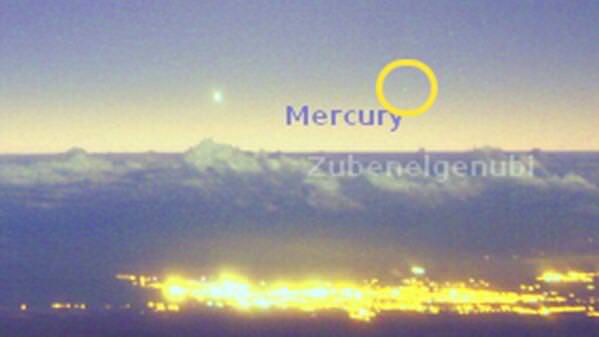Comet ISON is heading towards its inexorable close pass of the Sun, which will occur on November 28, 2013. And while we've been enjoying great views from astrophotographers, that luxury is probably over as of today, as the comet is just getting to close to the Sun -- and its blinding glare -- for us to see it. But while we won't be able to see it from Earth, we're lucky to have a fleet of spacecraft that will be able to keep an eye on the comet for us! The
STEREO spacecraft has already taken images
of ISON hurtling towards the Sun; the Solar and Heliospheric Observatory (SOHO) will start observations on November 27. Then, the Solar Dynamics Observatory (SDO) will view the comet for a few hours during its closest approach to the Sun, and the X-Ray telescope on the Hinode spacecraft will view Comet ISON for about 55 minutes during perihelion.
Will Comet ISON survive its close pass and emerge brighter than ever? Only time will tell. You can keep track of what is going on with ISON here on Universe Today, as well as at
NASA's Comet ISON website
, the
Comet ISON Observing Campaign website
, and there will be a
special Hangout on Google+
during perihelion on Nov. 28.
Above is a gorgeous timelapse of ISON from the Teide observatory in the Canary Islands on Nov. 22nd, 2013. See more images and videos below.
Above is a screenshot from the live camera views from the Canada France Hawaii Telescope webcam. You can see a live view from their webcam any time
at this link.
[caption id="attachment_106675" align="aligncenter" width="580"]
A montage of images of Comet ISON, taken from January-May and then September to late November. Credit and copyright: Efrain Morales/[/caption]
[caption id="attachment_106676" align="aligncenter" width="580"]
Comet ISON seen on November 22, 2013 from Corvalis, Oregon, USA. Manual alignment of 20 frames of 4 seconds each in Deep Sky Stacker. Credit and copyright: A Nartist on Flickr. [/caption]
[caption id="attachment_106679" align="aligncenter" width="580"]
Comet ISON (C/2012 S1) in the morning twilight, above centre, with Mercury above the trees at left of frame. Taken from home in southern Alberta, November 21, 2013, using the 135mm lens at f/2.8 and Canon 5D MkII at ISO 1600 for stack of 5 x 4 second exposures, tracked with the iOptron SkyTracker, with the ground from one exposure to avoid blurring from the tracking motion. Credit and copyright: Alan Dyer/Amazing Sky Photography. [/caption]
[caption id="attachment_106681" align="aligncenter" width="580"]
Comet C/2012 S1 (ISON) plus possible fragmentation or disconnect event on Nov 21, 2013, taken from New Mexico. Credit and copyright: Joseph Brimacombe. [/caption]
[caption id="attachment_106677" align="aligncenter" width="580"]
A glimpse of ISON from the Netherlands on November 21, 2013. Credit and copyright: Fred Kamphues. [/caption]
[caption id="attachment_106678" align="aligncenter" width="580"]
Comet ISON and Spica together during Full Moon on November 18, 2013, seen from Payson, Arizona. Credit and copyright: Chris Schur. [/caption]
Want to get your astrophoto featured on Universe Today? Join our Flickr group or send us your images by email (this means you're giving us permission to post them). Please explain what's in the picture, when you took it, the equipment you used, etc.
 Universe Today
Universe Today
